
Adaptations & Interactions
The Colorado
Blue Spruce is a very adaptable species that can withstand quite drastic
changes within its environment. The Spruce displays positive
phototropism as well as negative
gravitropism (or geotropism) in its stem as it reaches
towards the light out of the seed.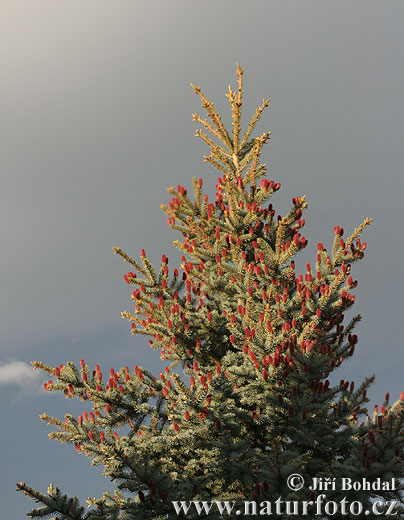 The roots of the tree on the other
hand display negative phototropism (they move away from the light) and
positive gravitropism (they move toward gravity). Using these stimuli
the Blue Spruce tree is able to sense the environment around it and
react however it deems necessary. The Colorado Spruce is found growing
in mountain valleys, but chiefly found near streams, where moisture
levels of the soil are high. The strong, adaptable roots of the Spruce
can even withstand changes in pH and even drought (up to a certain
point).
The roots of the tree on the other
hand display negative phototropism (they move away from the light) and
positive gravitropism (they move toward gravity). Using these stimuli
the Blue Spruce tree is able to sense the environment around it and
react however it deems necessary. The Colorado Spruce is found growing
in mountain valleys, but chiefly found near streams, where moisture
levels of the soil are high. The strong, adaptable roots of the Spruce
can even withstand changes in pH and even drought (up to a certain
point).
Interactions
between P. pungens and other species are numerous and come in all
varieties (mutualism, commensalism, etc.). As review, mutualism benefits
both organisms, commensalism is a symbiotic relationship where one
species benefits while the other is unaffected, and in parasitism one
species benefits and the other is harmed.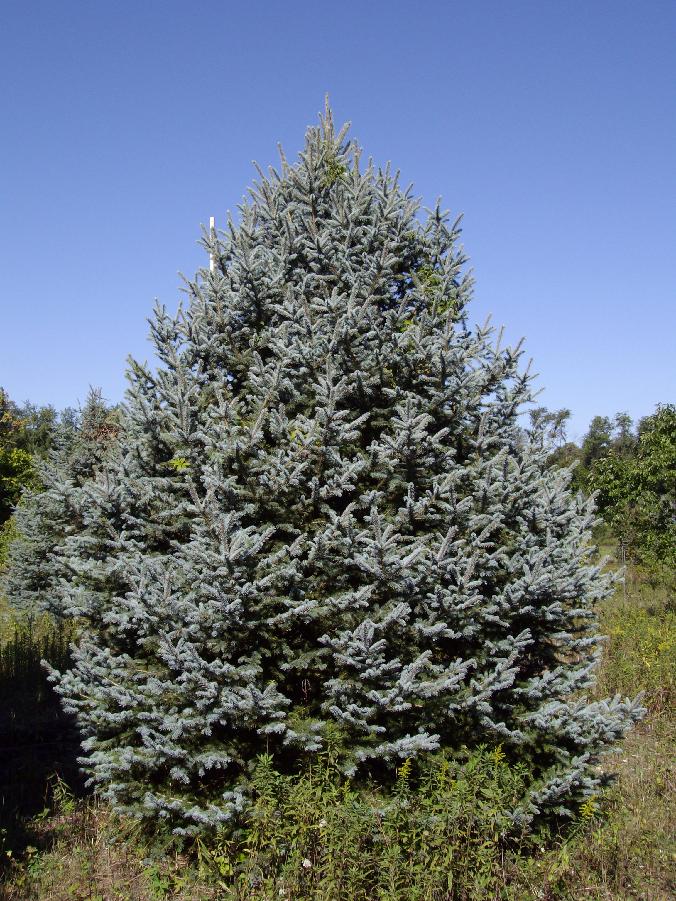
It has been
estimated that upwards of 70% of all land plants form mutualistic
relationships with mycorrhizal fungi, one of the most important
associations the plant has. In the pine family the majority of the fungi
are classified as ectomycorrhizae.
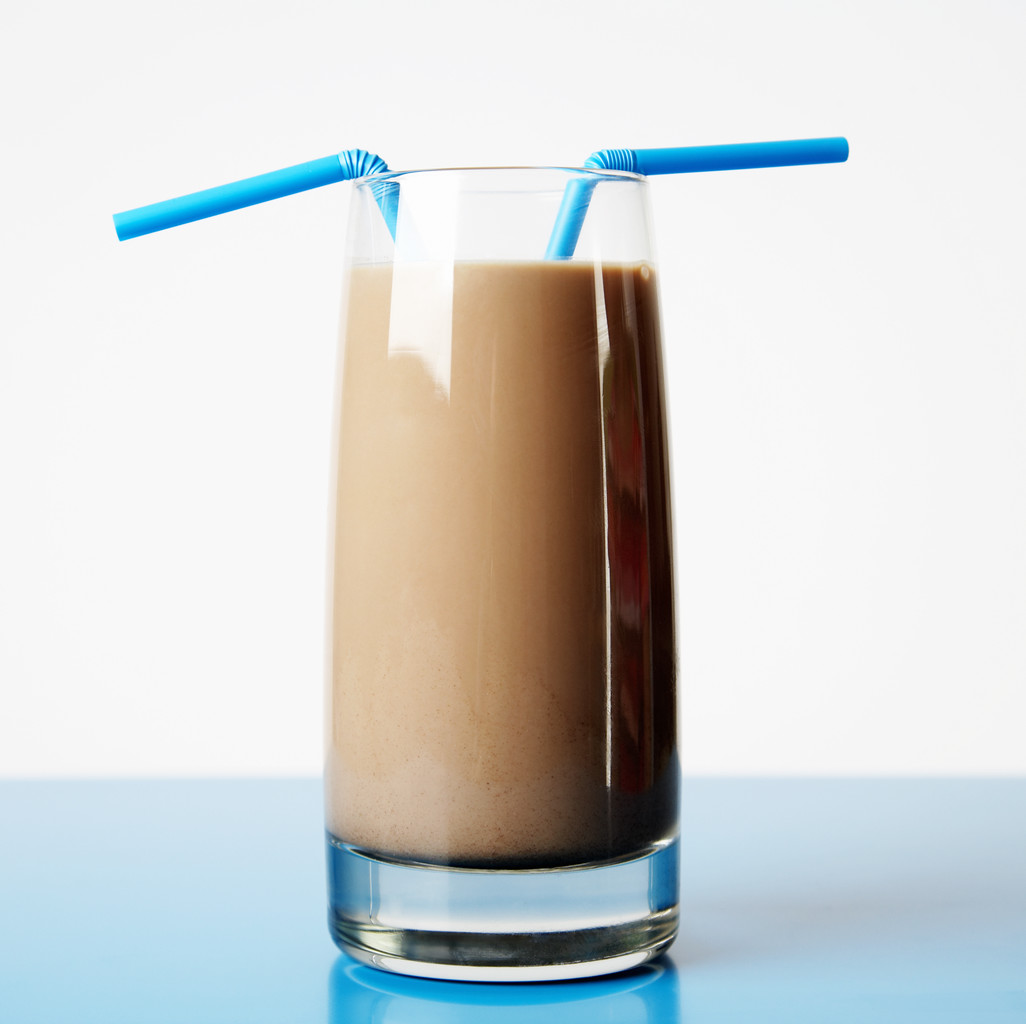 The relationship that takes place
beneath the soil, where ectomycorrhizae surround the cells in the roots
of their spruce substrate with hyphae, proves advantageous for both
sides. The attached mycorrhizae increase the surface area of the roots
of the plant, and also allow for transportation of nutrients and
minerals from plant to fungus.
The relationship that takes place
beneath the soil, where ectomycorrhizae surround the cells in the roots
of their spruce substrate with hyphae, proves advantageous for both
sides. The attached mycorrhizae increase the surface area of the roots
of the plant, and also allow for transportation of nutrients and
minerals from plant to fungus.
The Colorado
Blue Spruce provides homes for many creatures.
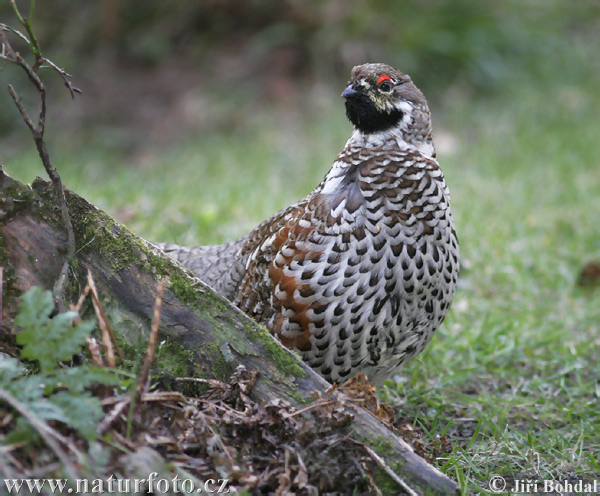 Spruce Grouse or
Falcipennis canadensis lives strictly in
conifer forests, taking refuge and nesting in spruce trees. These fowl
rely on the Spruce for safety, protection, occasionally food, and
reproduction (taking care of their eggs). Spruce trees get nothing in
return and therefore this relationship is considered commensal.
Spruce Grouse or
Falcipennis canadensis lives strictly in
conifer forests, taking refuge and nesting in spruce trees. These fowl
rely on the Spruce for safety, protection, occasionally food, and
reproduction (taking care of their eggs). Spruce trees get nothing in
return and therefore this relationship is considered commensal.
Some of the Colorado Spruce’s main predators are man and the destruction
of forests and cutting down of trees. Humans use the Blue Spruce for
landscaping, and other ornamental reasons, because of its vibrant blue
color! Use of the Colorado Spruce around the country as a Christmas tree
is another popular application. Other relationships are parasitic among
the Blue Spruce and insects, and also fungus.
Ips hunteri
has recently become an important pest of
drought-stressed Blue Spruce in urban and residential areas of Colorado.
This insect has also killed native Colorado Spruce stands in forested
regions throughout the western U.S.
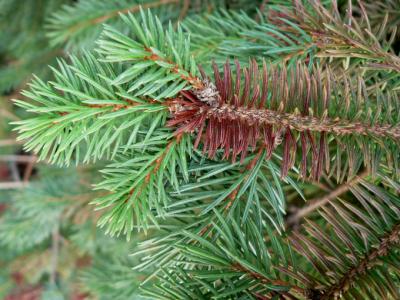 Several other pests, of which spider
mites are the worst, contribute to the decline in new growth during
mid-Summer times. P. pungens can also be infected with several
diseases. Some of the more severe include Rhizosphaera Needlecast and
Cytospora Canker.
Several other pests, of which spider
mites are the worst, contribute to the decline in new growth during
mid-Summer times. P. pungens can also be infected with several
diseases. Some of the more severe include Rhizosphaera Needlecast and
Cytospora Canker.
Rhizosphaera Needlecast is a disease
that affects P. pungens, primarily in New Mexico. This plant
disease is caused by the fungus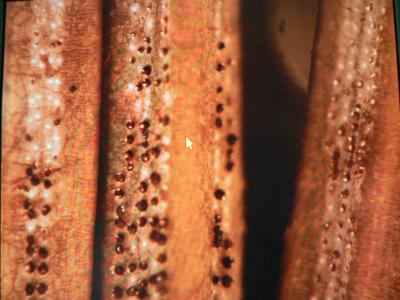 Rhizosphaera kalkhoffii which
mainly targets trees not grown in their natural habitat. The fungus does
not kill the tree but merely limits the spruce to carry only the needles
from the current year. Rhizosphaera needlecast infects needles on the
lower branches first and then works its way up to the top. Contaminated
needles turn a purplish brown color as fruiting bodies of the fungus
protrude out from stomatal openings.
Rhizosphaera kalkhoffii which
mainly targets trees not grown in their natural habitat. The fungus does
not kill the tree but merely limits the spruce to carry only the needles
from the current year. Rhizosphaera needlecast infects needles on the
lower branches first and then works its way up to the top. Contaminated
needles turn a purplish brown color as fruiting bodies of the fungus
protrude out from stomatal openings.